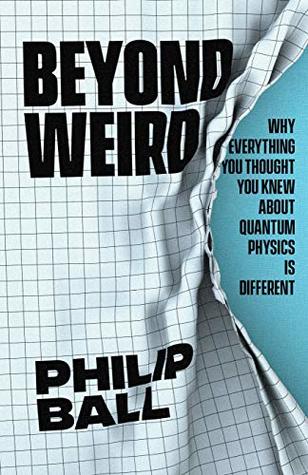More on this book
Community
Kindle Notes & Highlights
by
Philip Ball
Read between
January 20 - January 31, 2023
This property is known as non-commutation. What Heisenberg realised is that, in quantum matrix mechanics, the operators that reveal certain properties of a quantum state don’t commute.
Einstein and his colleagues made the perfectly reasonable assumption of locality: that the properties of a particle are localized on that particle, and what happens here can’t affect what happens there without some way of transmitting the effects across the intervening space.
But this locality is just what quantum entanglement undermines – which is why ‘spooky action at a distance’ is precisely the wrong way to look at it.
This co-ordination is called coherence
Likewise, if the quantum wavefunctions of two states are not coherent, they cannot interfere, nor can they maintain a superposition. A loss of coherence (decoherence) therefore destroys these fundamentally quantum properties, and the states behave more like distinct classical systems.
If a quantum system in a superposed state interacts with another particle, the two become linked into a composite superposition. That, we saw earlier, is exactly what entanglement is: a superposed state of two particles, whose interaction has turned them into a single quantum entity.
In theory there is no end to this process. That entangled air molecule hits another, and the second molecule gets captured in an entangled state too. As time passes, the initial quantum system becomes more and more entangled with its environment.
Quantum superpositions are not, then, really destroyed by the environment, but on the contrary infect the environment with their quantumness, turning the whole world steadily into one big quantum state.
Decoherence is what destroys the possibility of observing macroscopic superpositions – including Schrödinger’s live/dead cat. And this has nothing to do with observation in the normal sense: we don’t need a conscious mind to ‘look’ in order to ‘collapse the wavefunction’. All we need is for the environment to disperse the quantum coherence.
In other words, what we previously called measurement can, at least in large part (not completely, as we’ll see), be instead called decoherence.
The universe is always looking.
One possible reason why it took so long for decoherence to be identified as the mechanism for turning a quantum system ‘classical’ is that the early quantum theorists couldn’t get past an intuition of locality: the idea that the properties of an object reside on that object.
The researchers could control the rate of decoherence in these molecular beams by altering the pressure of the gas inside the apparatus: the more gas molecules there are, the more the fullerene molecules collide with them and lose their coherence.
If we were able with some amazing instrument to record the trajectories of all the air molecules bouncing off the speck of dust, we could figure out where the speck is without looking at it directly at all. We could just monitor the imprint it leaves on its environment.
Yes, you could reconstruct where an object is from the trajectories of air molecules bouncing off it, but only if you can collect that information before it gets scrambled by the molecules subsequently colliding with one another.
It’s no coincidence that vision is a reliable and widespread way that organisms find out about their environment!
Smell, which relies on the passage of odorant molecules through the busy, jostling air, is less good.
The corollary is that decoherence of position states tends to happen very quickly, because pretty much any scattering of photons from an object carries away positional information into the environment. And so it is really hard to ‘see’ large-ish objects being in ‘two places at once’.
It is the gathering of information that alters the picture. Measurement erases the information that the environment holds about what is measured.
Measurement now means ‘strong interaction with the environment’: strong enough, that is, to enable the quantum state to be deduced in principle from the imprint it has left, regardless of whether we actually make that deduction or not.


